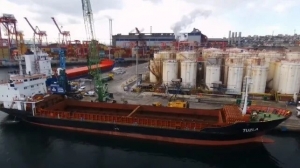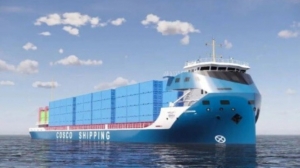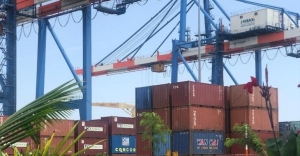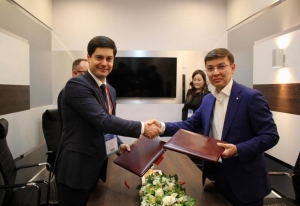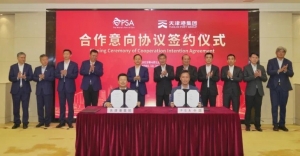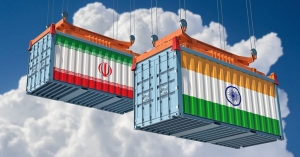News
Latest news
More...
In two days of diplomatic talks with Russia and Ukraine last week, Turkish diplomats made progress towards an agreement to release all Turkish cargo ships from Ukraine, where about five dozen foreign vessels have been trapped by a Russian naval blockade for the past 15 months. The agreement would require a guarantee from Russian forces not to fire on foreign ships as they depart.
"The parties expressed their positive approach regarding the coordination of the return of our merchant ships and their crews, which were stranded in Ukrainian ports due to the conflict conditions," said the Turkish Foreign Ministry in a statement.
All going well, the release of Turkish vessels could pave the way for the departure of other stranded foreign ships. The initial operation "will serve as a model for the evacuation of ships from other countries" that have been stranded in Ukraine due to the Russian invasion.
It is unclear whether the deal would include the recovery of the foreign vessels seized by Russian-backed proxy forces at Mariupol in June and July 2022.
The Turkish foreign ministry also expressed optimism on the prospects for renewing the Black Sea Grain Initiative, the Turkish/UN brokered deal that secured a Russian nonaggression guarantee for bulkers heading to three designated grain ports in Ukraine. Despite formal participation, Russia has impeded the agreement's function on multiple occasions, including slowing inspections and blocking the nomination of new vessels to the program, and has repeatedly threatened to withdraw if its demands are not met.
The initiative's latest renewal cycle expires this coming Thursday, and in recent weeks, Russian agreement on an extension appeared to be uncertain. However, Russian state media reported Friday that the deal will be extended by another 60 days while talks continue. According to the Turkish foreign ministry, the parties are "heading towards an agreement on the extension of the grain deal."
A de facto Russian blockade of all container, ro/ro, wet bulk and breakbulk traffic to Ukraine's Black Sea ports remains in effect.
China’s COSCO Shipping reports that it is making progress on its plans to launch its first electric-powered containerships on the Yangtze. Construction for the two vessels is now underway for the project that was first announced in March 2022. The ships are expected to begin service in late 2023.
The two ships are each reported to be 10,000 tons and designed to sail a route between the river and the sea stretching more than 600 miles. Each ship will be 393 feet in length with a beam of approximately 77.5 feet. They will have a design draft of 18 feet to provide good maneuverability along the Yangtze with a carrying capacity of up to 700 TEU. COSCO is billing the ships are the largest electric containerships in the world.
Each of the ships will be powered by two 900 kW main propulsion motors. When the project was unveiled last year, COSCO said the ships will use containerized batteries the size of a 20-foot container with a capacity of 50,000 kWh. These batteries will be charged onshore with COSCO envisioning a network of charging stations and depots to exchange the batteries along the river. In March 2023. COSCO reported that it had completed commissioning for elements of the power system making a key step toward the deployment.

First steel for the vessels was cut at the COSCO Shipping Heavy Industries shipyard in December. Assembly for the second of the vessels began on May 8 at the shipyard. When deployed, COSCO says they will save the equivalent of 32 tons of CO2 emissions every 24 hours.
A total of 51 organizations are contributing to the project which also includes Panasia Shipping in addition to COSCO. The Wuhan Institute of Standards, Chengrui Power, and Lloyd’s Register are among the organizations involved in the effort.
Last year, China launched the largest electric river cruise ship, which is operating in the area around the Three Gorges Dam and the first phase of an electrification project first proposed in 2018. The Chinese Ministry of Industry and Information Technology and the Ministry of Transportation jointly funded the project which is part of a broader effort aimed at electrification of the Yangtze River region.
In addition to the electric propulsion system, COSCO reports the ships will be equipped with an intelligent ship platform system and advanced situational awareness system. The application of the two systems they report will greatly improve the intelligence and safety of the ship.
Container line Hapag-Lloyd has completed its acquisition of 40% shareholding in J M Baxi Ports & Logistics Limited (JMBPL) previously approved by antitrust authorities.
The acquisition deal was inked in January 2023 when Hapag-Lloyd had made an agreement with an affiliate of Bain Capital Private Equity, which held a 35% stake in JMBPL, and the Kotak family, which holds most of the shares of JMBPL.
“By acquiring a stake in JMBPL, Hapag-Lloyd is strengthening its presence in the attractive growth market of India while expanding its terminal and infrastructure business at the same time,” Hapag Lloyd said.
The contracting parties agreed to not disclose any financial details of the deal. The move is part of Hapag-Lloyd’s Strategy 2023 of expanding its involvement in the terminal sector.
Hapag Lloyd recently also acquired the terminal business of Chile-based SAAM. It also holds stakes in the Italy-based Spinelli Group, Container Terminal Wilhelmshaven, the Container Terminal Altenwerder in Hamburg, Terminal TC3 in Tangier, and Terminal 2 in Damietta, Egypt, which is currently under construction.
The German company is said to have started working on its strategy for 2030, expected to be completed in the upcoming few months.
The railway companies of Russia, Kazakhstan, and Turkmenistan have signed a memorandum to establish a joint venture that will concentrate on transportation development.
On Friday, Kazakhstan's KTZ Express released a statement announcing that KTZ Express JSC, JSC RZD Logistics, and Transport and Logistics Center of Turkmenistan JSC had signed the document during the 27th International Exhibition of Transport and Logistics.
“The parties agreed to combine their competencies to form competitive tariff rates and “seamless” transportation of goods from Kazakhstan, Russia, Turkmenistan to Iran, India, the countries of the Middle East and the Asia-Pacific region with the participation of Aksaraiskaya, Ozinki, Bolashak, Inche-Burun, Serakhs border crossings and in the opposite direction,” the press release reads.
According to the press service, the joint venture will operate rail freight services on the eastern branch of the International North-South Transport Corridor (INSTC).
The INSTC is a multimodal network spanning 7,200 kilometers of ship, rail, and road routes. It is designed to provide the shortest multi-modal transportation route linking the Indian Ocean and the Persian Gulf to the Caspian and Baltic Seas.
Compared to the sea route via the Suez Canal, the INSTC reduces the distance by more than half, resulting in lower transportation costs and shorter transit times. In addition, the INSTC provides an alternative connectivity initiative to countries in the Eurasian region and reduces the time and cost for the transfer of goods from India to Russia and Europe via Iran.
The INSTC currently unites multiple transport systems across various countries, with Russia and Iran being the two countries contributing the most to the infrastructure development projects, accounting for 34.6 percent and 33.7 percent of total planned investments, respectively. Kazakhstan has a 16.5 percent share of investment in the INSTC's development.
Recent statistics indicate that over 0.6 million tons of cargo were transported from the stations of the northern railways along the North-South International Transport Corridor (ITC) in 2022. The volume of shipments in this direction increased by 36.3 percent compared to the previous year, with 448,000 tons of cargo shipped along the western branch of the ITC through Azerbaijan, and 130,000 tons of cargo shipped along the eastern branch through Kazakhstan and Turkmenistan. During the same period, the ports of the Caspian Sea shipped 26.6 thousand tons of cargo, marking an increase of more than 14 times.
It is projected that by 2030, the volume of Russian cargo transported through the North-South ITC will double from 17 million tones to 32 million tones. This growth is being driven by significant geopolitical changes that are disrupting global supply chains and transport networks. As a result of these developments, the role of the International North-South Transport Corridor is becoming increasingly important.
Chinese port operator Tianjin Port Group and Singapore-based PSA International have inked a co-operation intention agreement to jointly develop port and new energy businesses.
The signing of the co-operation intention agreement will strengthen our strategic partner relationship and jointly promote Tianjin ports’ development to be a world-class port, and improve PSA’s business function at Tianjin and other ports along Belt and Road initiatives, said Tianjin Port.
The two sides have agreed to deepen the co-operation on the new energy sector including wind power generation and photovoltaic power, as well as more sustainable development solutions for ports.
In addition, Tianjin port and PSA will strengthen collaborations on smart port equipment manufacturing and port machinery supply to jointly improve the manufacturing and digital position of the ports.
To carry out logistics park and project construction at Tianjin port, PSA and Tianjin port will explore more joint venture opportunities on logistics, warehouse, supply chain and multi-modal transportation.
Tianjin port and PSA's co-operation has brought about several achievements on container terminal operation and talent communications since their joint venture partnership started in 2005.
Iran’s Deputy Foreign Minister for Economic Relation Mehdi Safari proposed joint manufacturing activities with India across industries.
Hoping for an enhanced bilateral trade with India this year, he told PTI that there are a lot of opportunities for the two countries.
“There are a lot of opportunities… (that) they have in the products and industries, are complementary to each other. Especially in high technology, India is very good and we are very good in (the area of) bio, nano, and kinetic (technology),” said Safari who was speaking on the sidelines of an event jointly hosted by AIAI and WTC Mumbai.
According to him, this is a joint and common area in which both countries can have common manufacturing in India or Iran and promote exports to other countries.




















